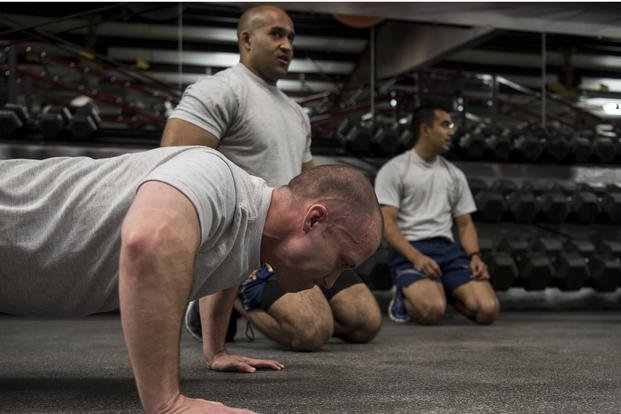Here is an email from a military man seeking to get better at his pull-ups and push-ups for an upcoming PFT for special-ops selection.
"Thank you for the 14-day Pull-up and the Push-up routine. I did it to the letter, doing on average 130 pull-ups and 300 push-ups per workout. I went from 19 solid pull-ups to 22 solid pull-ups, and 76 push-ups to 86 in 2 minutes.
"Now that I have come this far, what else can I do to get up to 25 solid pull-ups and 100 push-ups in 2 minutes?"
Because you already have a solid foundation on which to build, I would not recommend the Pull-up/Push-up Push workout if you are already getting more than 15 pull-ups and 75 push-ups. However, the advice on what is the next step is still the same.
The next step after the Push-up Push and the Pull-up Push Workout is to get back into a normal split routine, doing pull-ups and push-ups a maximum of three times a week.
Here is what I do not only to maintain 25-30 pull-ups and 100 push-ups, but also to help folks like you to achieve those goal scores on a fitness test.
The maintenance plan is three workouts during the week:
Workout #1
Do a pyramid-type workout with pull-ups, dips, push-ups and an abdominal exercise of choice (usually crunches, sit-ups, flutter kicks or a variety of all). The goal is to build up to a maximum repetition set of all exercises in the workout.
Check this one out, for example: PT pyramids.
**Note: Always balance out your workout with a good upper- and lower-back routine, as you do get many reps with these workouts that focus on the chest, shoulders and stomach muscles. See this plan (PDF)
Workout #2
Superset but sub-maximum repetitions:
- Run a quarter-mile in 90-100 seconds.
- Pull-ups 5-15
- Push-ups 40-50
- Sit-ups 40-50 (or abs of choice)
- Repeat above for 5-10 sets, depending on your fitness level. The goal is not to go to muscle failure.
Workout #3
Max-out workout. It is OK to fail this workout and push your max every set.
- Max pull-ups
- Max push-ups 1:00
- Max sit-ups in one minute (pace out 50-55 reps)
- Optional run of a quarter-mile in 90 seconds (I do this some days, not all.)
- Repeat above until you hit 100 pull-ups. Once you can reach 100 pull-ups in 4-5 sets, then shoot for 150 pull-ups in a total workout.
**Note: Try not to rest during any of these workouts; the rest is built into the circuit by working another muscle group. Try to take some time to stretch and drink some water between sets but no longer than 15-20 seconds.
This process will take a few weeks. Usually people stuck at 15 pull-ups will be able to do 20-25 pull-ups in 4-6 weeks with this type of physical training system.
There are many ways to get better at pull-ups. This is a proven method that I have been using for more than 10 years with future special-ops members. Send in some other ideas that have helped you in the past reach the 20 pull-up mark.
Stew Smith is a former Navy SEAL and fitness author certified as a Strength and Conditioning Specialist (CSCS) with the National Strength and Conditioning Association. Visit his Fitness eBook store if you're looking to start a workout program to create a healthy lifestyle. Send your fitness questions to stew@stewsmith.com.
Want to Learn More About Military Life?
Whether you're thinking of joining the military, looking for fitness and basic training tips, or keeping up with military life and benefits, Military.com has you covered. Subscribe to Military.com to have military news, updates and resources delivered directly to your inbox.




















